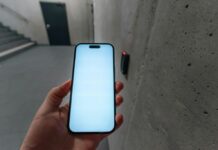Whether you’re designing digital mockups, preparing assets for a web project, or building a brand identity kit, one of the most time-consuming and detail-oriented tasks is removing image backgrounds. It’s a process that can quickly eat into your workflow—especially if you’re working with complex shapes, textures, or low-contrast edges.
But here’s the good news: you no longer need to waste hours using tedious selection tools or masking layers manually. With the background eraser tool from Creative Fabrica Studio, you can automate and accelerate your design process—without sacrificing quality or control.

In this post, we’ll explore why background removal is essential in professional design, how to optimize your workflow using smart tools like Creative Fabrica’s background remover, and offer technical tips to ensure your final assets are production-ready.
Why Manual Methods Fall Short in Modern Pipelines
Designers have traditionally relied on manual background removal techniques—lasso tools, masks, pen paths, and channel extractions. While these methods offer high control, they come with trade-offs. Manual background removal is time-consuming and repetitive, especially when working with detailed edges like fur, hair, or translucent materials. It also introduces inconsistency when handling batches of similar assets.
In high-pressure or high-volume environments—such as preparing multiple e-commerce images, promotional kits, or reusable design templates—these techniques don’t scale well. Small inconsistencies accumulate, leading to output that feels unpolished or unaligned.
Intelligent Edge Detection Through AI-Based Tools
The emergence of AI-powered tools marks a turning point in asset preparation. Instead of defining the separation between foreground and background manually, these tools analyze pixel data, edge contours, color separation, and visual depth. One such solution is the background eraser tool, which applies computer vision to automatically isolate the subject from the environment.
This method doesn’t rely on threshold values or simple contrast alone—it learns and recognizes common edge cases. It can distinguish between hard and soft transitions, interpret shadows and gradients, and cleanly separate even semi-transparent or layered materials. When applied correctly, it outputs a clean alpha mask and preserves edge detail that would take significantly longer to recreate manually.
Designing for Clean Isolation: File Preparation
Even the most advanced background removal models perform best with thoughtful input. Designers should consider image clarity, contrast, and framing before background removal. High-resolution files with clear subject boundaries reduce ambiguity for edge detection. Cropping out excess whitespace and centering the subject improves the model’s accuracy. After isolation, exporting the file as a PNG preserves the transparency layer and avoids post-processing complications.
The goal is to create design assets that are drop-in ready—transparent PNGs with sharp edges, no haloing, and consistent proportions across a batch. These assets integrate smoothly into layout compositions, allowing for better alignment, visual balance, and multi-surface adaptability.
Transparency as a Design Standard
Transparent PNGs are the preferred file type across multiple design environments—print mockups, web components, motion graphics, and vector overlays. Their utility lies in their neutrality. They do not carry background noise, embedded shadows, or edge clipping. Instead, they leave room for the designer to dictate how the subject interacts with its environment.
This is particularly relevant when working in environments where color schemes and background layers vary dynamically. It also plays a role in branding systems, where logos, icons, or illustrations must function across light and dark interfaces, various print finishes, or localized variations.
As digital artist Aida González Vázquez puts it:
“PNG stands for Portable Network Graphics. This format supports raster graphics without losing quality. It’s common to use PNG files for logo and web design. PNG files provide a transparent or semi-transparent background.”
This flexibility defines the standard for modern digital design.
Efficiency Without Compromise
Designers increasingly work in agile and iterative environments, and background removal tools must evolve to match that pace. A tool like Creative Fabrica’s background eraser isn’t just a shortcut—it’s a technical aid that fits into a larger workflow. When edge detection is handled algorithmically, it allows you to focus on layout structure, typography, content direction, and user interaction—areas that truly define the impact of a design.
Removing the background is no longer a creative task—it’s a technical one. And technical tasks should be automated when quality can be maintained. Precision cutouts, clean edges, and transparency shouldn’t be a luxury; they should be baseline attributes of every design asset in your pipeline.
Conclusion
Clean background removal enables design modularity. It’s not about gimmicks or shortcuts—it’s about preserving creative control by starting with technically sound assets. With intelligent tools, professional designers can integrate transparent elements faster and with more precision, improving everything downstream: from layout to animation to final export.
Clean cutouts are not the final goal. They are the starting point of every flexible, professional, scalable design system.







